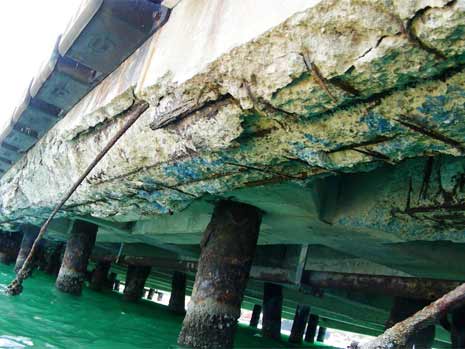Concrete structures are designed to achieve a certain service life. For instance, bridges are designed to achieve a 100 – 120 years of service. However, concrete life can be compromised or ended before the specified life.
A durable concrete will guarantee the achievement of structures with long life. In other words, it can last longer and withstand the environmental attacks without significant defects on the performance of the structures.
According to the American Concrete Institute (ACI), the durability is defined as “the ability of concrete to resist weathering action, chemical attack, and abrasion while maintaining its desired engineering properties”.
It is important to mention that achieving the strength requirements for concrete alone can not ensure the durability of the concrete. The relationship between strength and durability is not linearly proportional. In fact, High Strength Concrete (HSC) may be deteriorated under the action of, for example, chemical attack resulting in loss of stability and performance. Of course, higher strength of concrete can improve the resistance against the cracking from the internal stresses but this does not necessary guarantee the durability of concrete.
Increasing the service life of a structure depends on the quality the material selection, mix design method, production, transportation, placement, finishing and curing of concrete. Moreover, concretes serve in different exposure conditions would require different durability requirements. To summarize, durable concrete must have the ability to withstand the potential deteriorative conditions effectively to ensure the long life as designed.
The most important degradation mechanisms in concrete structures are:
1. Freeze-thaw damage (physical effects, weathering)
2. Alkali-aggregate reactions (chemical effects)
3. Sulfate attack (chemical effects)
4. Corrosion of reinforcing steel embedded in concrete (chemical effects)
- Carbonation of concrete
- Chloride induced
5. Abrasion (physical effects)
6. Mechanical loads (physical effects)
7. Microbiological induced attack (chemical effects)
